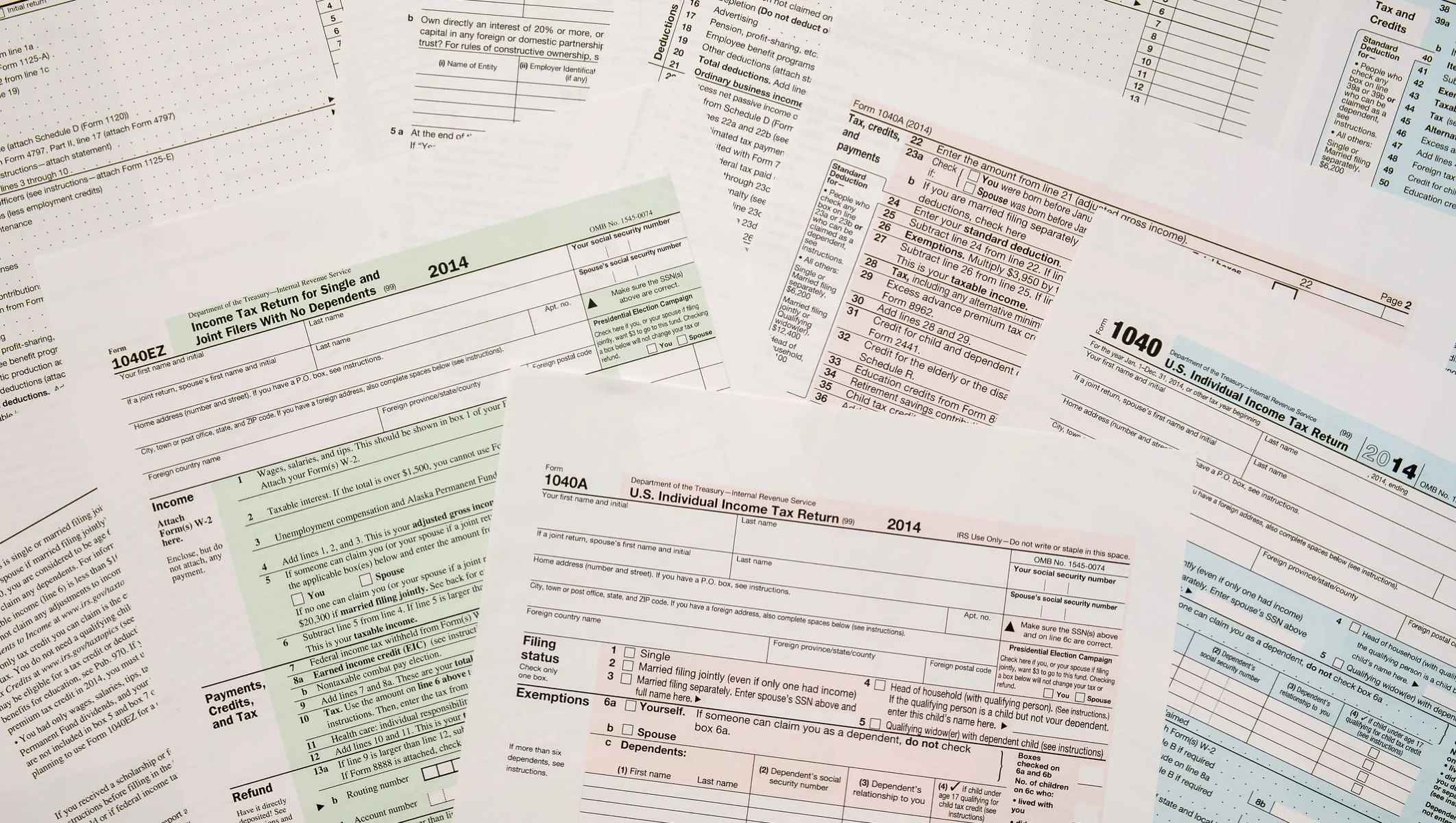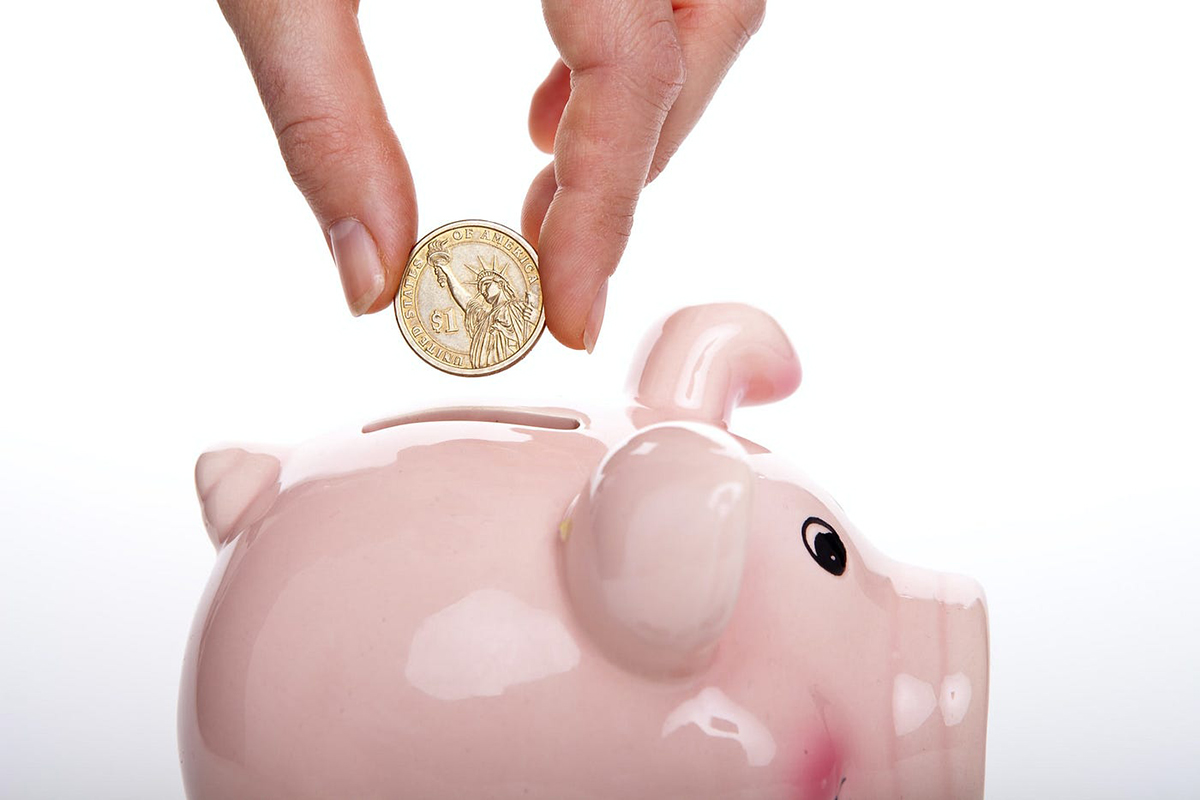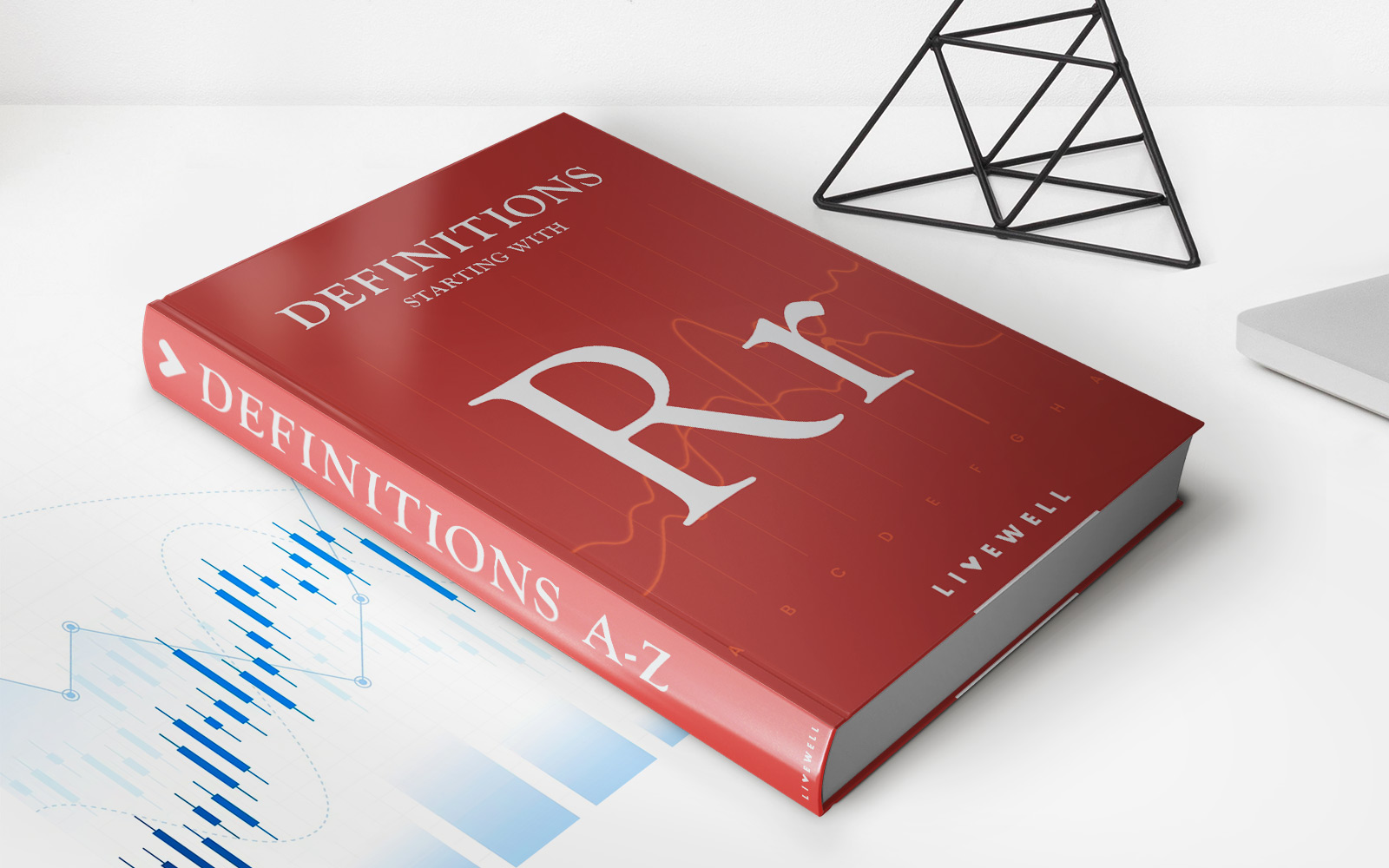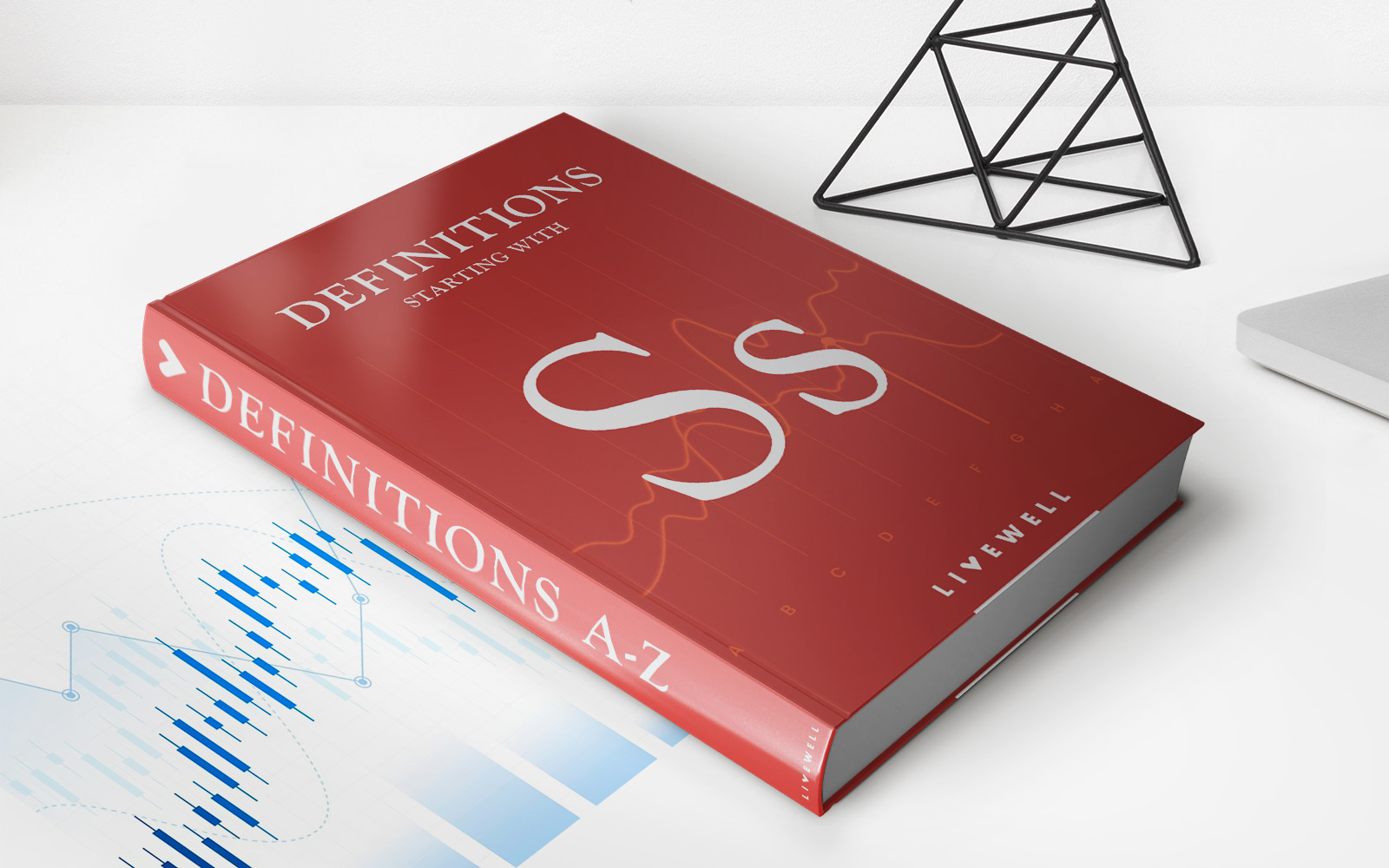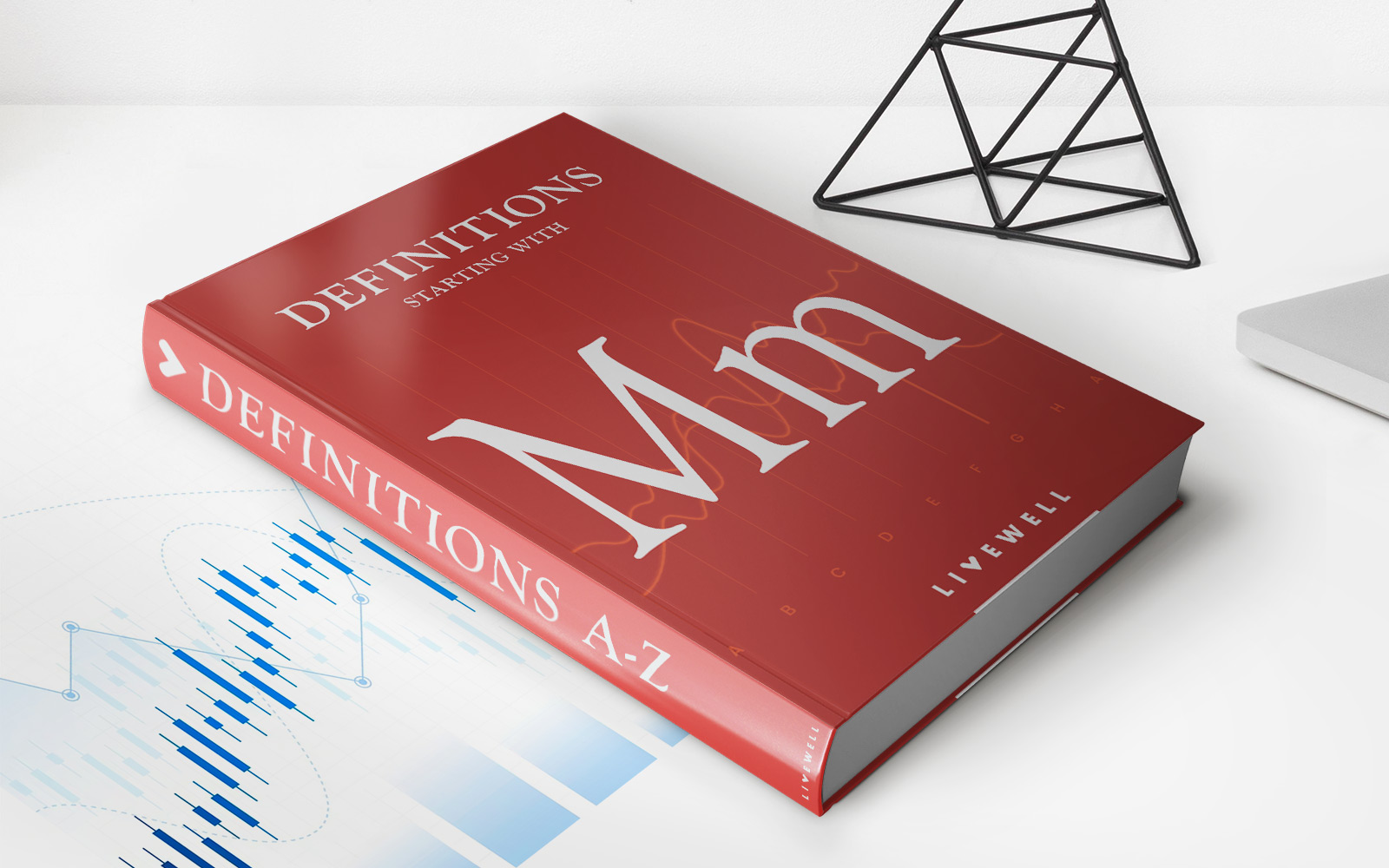

Finance
What To Do With $50K In Savings
Published: January 16, 2024
Looking to finance your future? Discover what to do with $50K in savings to maximize your financial growth and secure your financial future.
(Many of the links in this article redirect to a specific reviewed product. Your purchase of these products through affiliate links helps to generate commission for LiveWell, at no extra cost. Learn more)
Table of Contents
- Introduction
- Option 1: Pay Off High-Interest Debt
- Option 2: Build an Emergency Fund
- Option 3: Invest in a Tax-Advantaged Retirement Account
- Option 4: Start a Diversified Investment Portfolio
- Option 5: Save for a Down Payment on a Home
- Option 6: Further Your Education or Career Development
- Option 7: Fund a Dream Vacation or Travel Experience
- Option 8: Support a Charitable Cause or Organization
- Conclusion
Introduction
So, you’ve managed to save up $50,000. Congratulations! You’ve reached a significant financial milestone. Now comes the important question: what should you do with that money? It’s a decision that can have a lasting impact on your financial future.
Before diving into the various options for your $50,000, it’s essential to assess your current financial situation and goals. Are you carrying any high-interest debt? Do you have an emergency fund? Are you saving for retirement or other long-term goals? Understanding your financial priorities will help guide you in making the right decision.
In this article, we will explore eight different options for what to do with your $50,000. Each option offers unique benefits and considerations, so it’s essential to evaluate which aligns best with your financial objectives. Whether you want to eliminate debt, save for the future, invest, or indulge in a dream experience, there’s a perfect path for you to take.
<h2>Introduction</h2>
<p>So, you’ve managed to save up $50,000. Congratulations! You’ve reached a significant financial milestone. Now comes the important question: what should you do with that money? It’s a decision that can have a lasting impact on your financial future.</p>
<p>Before diving into the various options for your $50,000, it’s essential to assess your current financial situation and goals. Are you carrying any high-interest debt? Do you have an emergency fund? Are you saving for retirement or other long-term goals? Understanding your financial priorities will help guide you in making the right decision.</p>
<p>In this article, we will explore eight different options for what to do with your $50,000. Each option offers unique benefits and considerations, so it’s essential to evaluate which aligns best with your financial objectives. Whether you want to eliminate debt, save for the future, invest, or indulge in a dream experience, there’s a perfect path for you to take.</p>
Option 1: Pay Off High-Interest Debt
If you have high-interest debt, such as credit card balances or personal loans, using your $50,000 to pay them off can provide immediate financial relief. High-interest debt can be a significant drain on your monthly budget, and paying it off can save you money in the long run.
Start by listing all your debts and the interest rates associated with each. Focus on the debts with the highest interest rates first, as these will cost you the most in interest over time. By paying off these high-interest debts, you can reduce your overall debt burden and potentially increase your credit score.
One strategy is the snowball method, where you focus on paying off the smallest debt first while making minimum payments on the others. Once the smallest debt is paid off, you can roll that payment into the next smallest debt, creating a snowball effect. This approach provides a sense of accomplishment and motivates you to keep tackling your debt.
Another strategy is the avalanche method, where you prioritize paying off the debt with the highest interest rate first. This method can save you more money in interest payments over time. By eliminating high-interest debt, you free up more of your monthly income to save, invest, or spend on other financial goals.
Before using your $50,000 to pay off debt, consider whether you have any other financial obligations or savings goals to fulfill. If you don’t have an emergency fund, you might want to set aside a portion of the $50,000 to cover unexpected expenses. It’s vital to strike a balance between debt payoff and building a financial safety net.
<h2>Option 1: Pay Off High-Interest Debt</h2>
<p>If you have high-interest debt, such as credit card balances or personal loans, using your $50,000 to pay them off can provide immediate financial relief. High-interest debt can be a significant drain on your monthly budget, and paying it off can save you money in the long run.</p>
<p>Start by listing all your debts and the interest rates associated with each. Focus on the debts with the highest interest rates first, as these will cost you the most in interest over time. By paying off these high-interest debts, you can reduce your overall debt burden and potentially increase your credit score.</p>
<p>One strategy is the snowball method, where you focus on paying off the smallest debt first while making minimum payments on the others. Once the smallest debt is paid off, you can roll that payment into the next smallest debt, creating a snowball effect. This approach provides a sense of accomplishment and motivates you to keep tackling your debt.</p>
<p>Another strategy is the avalanche method, where you prioritize paying off the debt with the highest interest rate first. This method can save you more money in interest payments over time. By eliminating high-interest debt, you free up more of your monthly income to save, invest, or spend on other financial goals.</p>
<p>Before using your $50,000 to pay off debt, consider whether you have any other financial obligations or savings goals to fulfill. If you don’t have an emergency fund, you might want to set aside a portion of the $50,000 to cover unexpected expenses. It’s vital to strike a balance between debt payoff and building a financial safety net.</p>
Option 2: Build an Emergency Fund
Life is full of unexpected surprises, and having an emergency fund can provide you with peace of mind and financial security during challenging times. An emergency fund is a separate savings account specifically designated for unforeseen expenses like medical bills, car repairs, or job loss.
If you don’t already have an emergency fund, allocating a portion of your $50,000 to build one is a wise choice. Financial experts recommend having at least three to six months’ worth of living expenses in your emergency fund. Assess your monthly expenses, including rent/mortgage, utilities, groceries, and insurance, to determine the appropriate amount for your fund.
Having an emergency fund can prevent you from going further into debt when unexpected expenses arise. It provides a safety net, allowing you to handle financial crises without jeopardizing your long-term financial goals or relying on credit cards or loans.
Consider keeping your emergency fund in a high-yield savings account or a money market account. These types of accounts offer competitive interest rates, ensuring that your money grows over time while remaining easily accessible when needed.
If you already have an emergency fund, but it’s not fully funded, you can use a portion of your $50,000 to top it up. Aim to reach your desired savings goal to achieve a sense of financial security and preparedness for any unforeseen circumstances that may arise.
<h2>Option 2: Build an Emergency Fund</h2>
<p>Life is full of unexpected surprises, and having an emergency fund can provide you with peace of mind and financial security during challenging times. An emergency fund is a separate savings account specifically designated for unforeseen expenses like medical bills, car repairs, or job loss.</p>
<p>If you don’t already have an emergency fund, allocating a portion of your $50,000 to build one is a wise choice. Financial experts recommend having at least three to six months’ worth of living expenses in your emergency fund. Assess your monthly expenses, including rent/mortgage, utilities, groceries, and insurance, to determine the appropriate amount for your fund.</p>
<p>Having an emergency fund can prevent you from going further into debt when unexpected expenses arise. It provides a safety net, allowing you to handle financial crises without jeopardizing your long-term financial goals or relying on credit cards or loans.</p>
<p>Consider keeping your emergency fund in a high-yield savings account or a money market account. These types of accounts offer competitive interest rates, ensuring that your money grows over time while remaining easily accessible when needed.</p>
<p>If you already have an emergency fund, but it’s not fully funded, you can use a portion of your $50,000 to top it up. Aim to reach your desired savings goal to achieve a sense of financial security and preparedness for any unforeseen circumstances that may arise.</p>
Option 3: Invest in a Tax-Advantaged Retirement Account
Planning for retirement is crucial, and investing in a tax-advantaged retirement account is a smart move for your long-term financial well-being. With your $50,000, you can contribute to retirement accounts like a 401(k) or an Individual Retirement Account (IRA).
Contributing to a retirement account offers several benefits. Firstly, these accounts provide tax advantages. Contributions to a traditional 401(k) or traditional IRA are made with pre-tax dollars, reducing your current taxable income. This allows your money to grow tax-deferred until retirement when withdrawals are taxed at your regular income tax rate.
If you opt for a Roth 401(k) or Roth IRA, your contributions are made with after-tax dollars. However, qualified withdrawals in retirement are tax-free, including any investment gains you’ve earned over the years. By choosing a Roth account, you can potentially benefit from tax-free growth and have more flexibility in retirement.
The earlier you start investing in retirement accounts, the greater the impact of compounding interest over time. If you have not maxed out your annual contribution limit for these accounts, using a portion of your $50,000 can supercharge your retirement savings.
Before investing, familiarize yourself with the contribution limits, eligibility criteria, and withdrawal rules specific to the retirement account you choose. Consider seeking advice from a financial advisor to ensure you make informed decisions tailored to your individual circumstances.
Investing in a tax-advantaged retirement account not only helps secure your future but also allows you to take advantage of potential employer matches (if available) and enjoy the benefits of compound growth. Start saving for retirement today and reap the rewards in the years to come.
<h2>Option 3: Invest in a Tax-Advantaged Retirement Account</h2>
<p>Planning for retirement is crucial, and investing in a tax-advantaged retirement account is a smart move for your long-term financial well-being. With your $50,000, you can contribute to retirement accounts like a 401(k) or an Individual Retirement Account (IRA).</p>
<p>Contributing to a retirement account offers several benefits. Firstly, these accounts provide tax advantages. Contributions to a traditional 401(k) or traditional IRA are made with pre-tax dollars, reducing your current taxable income. This allows your money to grow tax-deferred until retirement when withdrawals are taxed at your regular income tax rate.</p>
<p>If you opt for a Roth 401(k) or Roth IRA, your contributions are made with after-tax dollars. However, qualified withdrawals in retirement are tax-free, including any investment gains you’ve earned over the years. By choosing a Roth account, you can potentially benefit from tax-free growth and have more flexibility in retirement.</p>
<p>The earlier you start investing in retirement accounts, the greater the impact of compounding interest over time. If you have not maxed out your annual contribution limit for these accounts, using a portion of your $50,000 can supercharge your retirement savings.</p>
<p>Before investing, familiarize yourself with the contribution limits, eligibility criteria, and withdrawal rules specific to the retirement account you choose. Consider seeking advice from a financial advisor to ensure you make informed decisions tailored to your individual circumstances.</p>
<p>Investing in a tax-advantaged retirement account not only helps secure your future but also allows you to take advantage of potential employer matches (if available) and enjoy the benefits of compound growth. Start saving for retirement today and reap the rewards in the years to come.</p>
Option 4: Start a Diversified Investment Portfolio
If you’re looking to grow your wealth and potentially earn higher returns, starting a diversified investment portfolio can be a lucrative option. With $50,000 at your disposal, you have a solid foundation to begin your investment journey.
A diversified investment portfolio involves spreading your money across different asset classes, such as stocks, bonds, real estate, and commodities. This strategy helps mitigate risks by reducing the impact of any single investment’s performance on your overall portfolio.
Before diving into investments, it’s crucial to assess your risk tolerance and investment goals. Are you comfortable with stock market volatility, or do you prefer more stable investments? Are you investing for long-term growth or short-term gains?
Consider seeking guidance from a financial advisor who can help you create a tailored investment plan based on your risk appetite and financial objectives. They can help you choose the right mix of investments that align with your goals and help you navigate the complex investment landscape.
With your $50,000, you can explore various investment options. Stock investments offer potential high returns but also come with higher risks. Bonds, on the other hand, provide stability and income but tend to have lower returns. Real estate investments, like rental properties or real estate investment trusts (REITs), can offer both income and potential appreciation.
Another option is to invest in index funds or exchange-traded funds (ETFs), which provide instant diversification by tracking a specific market index. These funds enable you to invest in a wide range of stocks or bonds in a single transaction.
Remember that investing involves risks, and it’s essential to do thorough research and continuously monitor your investments. Review your portfolio periodically and make adjustments as needed to stay on track with your financial goals.
By starting a diversified investment portfolio, you can potentially grow your wealth over time and take advantage of the power of compounding. However, it’s important to remain patient, stay informed, and take a long-term perspective when it comes to investing.
<h2>Option 4: Start a Diversified Investment Portfolio</h2>
<p>If you’re looking to grow your wealth and potentially earn higher returns, starting a diversified investment portfolio can be a lucrative option. With $50,000 at your disposal, you have a solid foundation to begin your investment journey.</p>
<p>A diversified investment portfolio involves spreading your money across different asset classes, such as stocks, bonds, real estate, and commodities. This strategy helps mitigate risks by reducing the impact of any single investment’s performance on your overall portfolio.</p>
<p>Before diving into investments, it’s crucial to assess your risk tolerance and investment goals. Are you comfortable with stock market volatility, or do you prefer more stable investments? Are you investing for long-term growth or short-term gains?</p>
<p>Consider seeking guidance from a financial advisor who can help you create a tailored investment plan based on your risk appetite and financial objectives. They can help you choose the right mix of investments that align with your goals and help you navigate the complex investment landscape.</p>
<p>With your $50,000, you can explore various investment options. Stock investments offer potential high returns but also come with higher risks. Bonds, on the other hand, provide stability and income but tend to have lower returns. Real estate investments, like rental properties or real estate investment trusts (REITs), can offer both income and potential appreciation.</p>
<p>Another option is to invest in index funds or exchange-traded funds (ETFs), which provide instant diversification by tracking a specific market index. These funds enable you to invest in a wide range of stocks or bonds in a single transaction.</p>
<p>Remember that investing involves risks, and it’s essential to do thorough research and continuously monitor your investments. Review your portfolio periodically and make adjustments as needed to stay on track with your financial goals.</p>
<p>By starting a diversified investment portfolio, you can potentially grow your wealth over time and take advantage of the power of compounding. However, it’s important to remain patient, stay informed, and take a long-term perspective when it comes to investing.</p>
Option 5: Save for a Down Payment on a Home
If you have the dream of becoming a homeowner, using your $50,000 to save for a down payment can bring you one step closer to turning that dream into a reality. A down payment is a significant upfront payment required when purchasing a home.
The amount of the down payment typically varies depending on the cost of the home and the type of mortgage you are securing. In general, a larger down payment can result in a lower monthly mortgage payment and potentially save you money in the long run by reducing interest charges.
Consider your desired home price range and research the typical down payment percentage required by lenders. It’s advisable to aim for a down payment of at least 20% of the home’s purchase price. This amount can help you avoid private mortgage insurance (PMI), which is an additional cost that lenders may require for borrowers with a down payment of less than 20%.
By dedicating your $50,000 to saving for a down payment, you can significantly boost your savings and accelerate your home-buying timeline. Track your expenses diligently, cut back on non-essential purchases, and consider automating regular contributions to a dedicated savings account.
While saving for a down payment, keep in mind that you should also budget for other home-buying costs. These may include closing costs, home inspections, and moving expenses. Factor in these expenses when determining the amount you need to save for your down payment.
If you’re not ready to buy a home in the immediate future, you could also explore investing your $50,000 in low-risk instruments such as high-yield savings accounts or short-term certificates of deposit (CDs). These options offer modest returns while keeping your money easily accessible when you’re ready to make a down payment.
Remember, homeownership is a significant financial commitment, so take the time to assess your overall financial situation and determine if it aligns with your long-term goals. Saving for a down payment is a step in the right direction and can bring you closer to owning your dream home.
<h2>Option 5: Save for a Down Payment on a Home</h2>
<p>If you have the dream of becoming a homeowner, using your $50,000 to save for a down payment can bring you one step closer to turning that dream into a reality. A down payment is a significant upfront payment required when purchasing a home.</p>
<p>The amount of the down payment typically varies depending on the cost of the home and the type of mortgage you are securing. In general, a larger down payment can result in a lower monthly mortgage payment and potentially save you money in the long run by reducing interest charges.</p>
<p>Consider your desired home price range and research the typical down payment percentage required by lenders. It’s advisable to aim for a down payment of at least 20% of the home’s purchase price. This amount can help you avoid private mortgage insurance (PMI), which is an additional cost that lenders may require for borrowers with a down payment of less than 20%.</p>
<p>By dedicating your $50,000 to saving for a down payment, you can significantly boost your savings and accelerate your home-buying timeline. Track your expenses diligently, cut back on non-essential purchases, and consider automating regular contributions to a dedicated savings account.</p>
<p>While saving for a down payment, keep in mind that you should also budget for other home-buying costs. These may include closing costs, home inspections, and moving expenses. Factor in these expenses when determining the amount you need to save for your down payment.</p>
<p>If you’re not ready to buy a home in the immediate future, you could also explore investing your $50,000 in low-risk instruments such as high-yield savings accounts or short-term certificates of deposit (CDs). These options offer modest returns while keeping your money easily accessible when you’re ready to make a down payment.</p>
<p>Remember, homeownership is a significant financial commitment, so take the time to assess your overall financial situation and determine if it aligns with your long-term goals. Saving for a down payment is a step in the right direction and can bring you closer to owning your dream home.</p>
Option 6: Further Your Education or Career Development
Investing in your education and career development is a wise use of your $50,000. Whether you want to pursue a higher degree, attend professional courses, or obtain certifications, acquiring additional knowledge and skills can open doors to new career opportunities and potentially lead to higher earnings.
Consider your long-term career goals and research the educational or training programs that can help you achieve them. Look for reputable institutions or online platforms that offer courses or programs in your desired field. Evaluate the cost, duration, and potential return on investment of these educational options.
With $50,000, you can enroll in a degree program, such as a master’s degree or an executive education program. These programs can provide specialized knowledge and enhance your expertise in a specific area. It’s essential to research the job market and career prospects in your field to ensure that investing in education aligns with your career goals.
You may also consider using the funds to attend professional conferences or workshops that offer networking opportunities and industry insights. These events can expand your professional network and keep you updated on the latest trends and advancements in your field.
If earning a degree or attending a long-term program is not feasible, investing in short-term courses or certifications can also enhance your skills and credentials. Look for programs that offer practical, hands-on training or focus on in-demand skills that employers value.
Before committing to any educational program, evaluate your financial situation and consider how it will impact your current income and expenses. Determine if you need to take a break from work to pursue full-time education or if you can balance part-time studies alongside your current job.
Investing in your education and career development can be a strategic move that pays off in the long run. It allows you to acquire valuable skills and knowledge that can enhance your professional journey and potentially lead to better job prospects and increased earning potential.
<h2>Option 6: Further Your Education or Career Development</h2>
<p>Investing in your education and career development is a wise use of your $50,000. Whether you want to pursue a higher degree, attend professional courses, or obtain certifications, acquiring additional knowledge and skills can open doors to new career opportunities and potentially lead to higher earnings.</p>
<p>Consider your long-term career goals and research the educational or training programs that can help you achieve them. Look for reputable institutions or online platforms that offer courses or programs in your desired field. Evaluate the cost, duration, and potential return on investment of these educational options.</p>
<p>With $50,000, you can enroll in a degree program, such as a master’s degree or an executive education program. These programs can provide specialized knowledge and enhance your expertise in a specific area. It’s essential to research the job market and career prospects in your field to ensure that investing in education aligns with your career goals.</p>
<p>You may also consider using the funds to attend professional conferences or workshops that offer networking opportunities and industry insights. These events can expand your professional network and keep you updated on the latest trends and advancements in your field.</p>
<p>If earning a degree or attending a long-term program is not feasible, investing in short-term courses or certifications can also enhance your skills and credentials. Look for programs that offer practical, hands-on training or focus on in-demand skills that employers value.</p>
<p>Before committing to any educational program, evaluate your financial situation and consider how it will impact your current income and expenses. Determine if you need to take a break from work to pursue full-time education or if you can balance part-time studies alongside your current job.</p>
<p>Investing in your education and career development can be a strategic move that pays off in the long run. It allows you to acquire valuable skills and knowledge that can enhance your professional journey and potentially lead to better job prospects and increased earning potential.</p>
Option 7: Fund a Dream Vacation or Travel Experience
After working hard and saving $50,000, it’s time to reward yourself with a dream vacation or travel experience. Using your savings to fund a memorable trip can provide you with experiences, cultural enrichment, and lifelong memories.
Start by envisioning your dream destination or travel experience. Do you dream of exploring ancient ruins, relaxing on a pristine beach, or immersing yourself in a new culture? Research the costs associated with your desired trip, including flights, accommodations, meals, activities, and transportation.
Having $50,000 allows you the flexibility to create the travel experience of a lifetime. Consider upgrading your accommodations, splurging on unique activities or excursions, or extending your trip to explore multiple destinations.
While planning your trip, be mindful of any travel restrictions, visa requirements, or health and safety considerations. Stay updated on travel advisories and guidelines to ensure that your dream vacation goes smoothly and safely.
If you’re not ready to embark on your dream trip just yet, you could explore the option of setting up a travel fund. Allocate a portion of your $50,000 to a dedicated savings account specifically for future travel. This way, you can continue saving towards your dream vacation while attending to other financial goals.
Remember that a dream vacation doesn’t have to be extravagant or expensive. You can find incredible experiences within your budget, such as backpacking trips, local adventures, or volunteer programs that combine travel and giving back to communities.
Investing in travel allows you to broaden your horizons, learn about different cultures, and create priceless memories. It’s an opportunity to take a break from the routine of daily life and explore the world. So, go ahead, use your $50,000 to fund your dream vacation, and embark on the adventure of a lifetime.
<h2>Option 7: Fund a Dream Vacation or Travel Experience</h2>
<p>After working hard and saving $50,000, it’s time to reward yourself with a dream vacation or travel experience. Using your savings to fund a memorable trip can provide you with experiences, cultural enrichment, and lifelong memories.</p>
<p>Start by envisioning your dream destination or travel experience. Do you dream of exploring ancient ruins, relaxing on a pristine beach, or immersing yourself in a new culture? Research the costs associated with your desired trip, including flights, accommodations, meals, activities, and transportation.</p>
<p>Having $50,000 allows you the flexibility to create the travel experience of a lifetime. Consider upgrading your accommodations, splurging on unique activities or excursions, or extending your trip to explore multiple destinations.</p>
<p>While planning your trip, be mindful of any travel restrictions, visa requirements, or health and safety considerations. Stay updated on travel advisories and guidelines to ensure that your dream vacation goes smoothly and safely.</p>
<p>If you’re not ready to embark on your dream trip just yet, you could explore the option of setting up a travel fund. Allocate a portion of your $50,000 to a dedicated savings account specifically for future travel. This way, you can continue saving towards your dream vacation while attending to other financial goals.</p>
<p>Remember that a dream vacation doesn’t have to be extravagant or expensive. You can find incredible experiences within your budget, such as backpacking trips, local adventures, or volunteer programs that combine travel and giving back to communities.</p>
<p>Investing in travel allows you to broaden your horizons, learn about different cultures, and create priceless memories. It’s an opportunity to take a break from the routine of daily life and explore the world. So, go ahead, use your $50,000 to fund your dream vacation, and embark on the adventure of a lifetime.</p>
Option 8: Support a Charitable Cause or Organization
Using your $50,000 to support a charitable cause or organization can make a positive impact and bring about meaningful change in the world. Philanthropy allows you to contribute towards causes you are passionate about and help those in need.
Start by identifying the issues or causes close to your heart. Whether it’s supporting education, healthcare, environmental conservation, poverty alleviation, or social justice, there are countless charitable organizations dedicated to making a difference in these areas.
Research and choose reputable charities or non-profit organizations that align with your values and have a proven track record of effectiveness. Look for transparency in their operations and financial management to ensure your donation is being utilized responsibly.
Consider allocating a portion of your $50,000 as a direct financial contribution to the organizations you support. Your donation can help fund essential initiatives, programs, and projects that address the specific needs of the cause.
Alternatively, you can choose to make a long-term impact by establishing a charitable foundation or endowment. This allows you to create a lasting legacy and continue to support causes you care about even beyond your initial donation.
Additionally, you can explore other ways to give back, such as volunteering your time and skills. Many charities and organizations rely on the support of volunteers to carry out their work. Through volunteering, you can directly contribute to their efforts and make a difference on a personal level.
Remember that supporting a charitable cause is not only about monetary contributions but also about raising awareness and advocating for change. Use your voice and influence to educate others, encourage charitable giving, and promote the causes that are important to you.
By supporting a charitable cause or organization, you have the power to make a lasting impact and contribute to a better world. Take the time to research and choose the causes that resonate with you, and use your $50,000 to create positive change and improve the lives of others.
<h2>Option 8: Support a Charitable Cause or Organization</h2>
<p>Using your $50,000 to support a charitable cause or organization can make a positive impact and bring about meaningful change in the world. Philanthropy allows you to contribute towards causes you are passionate about and help those in need.</p>
<p>Start by identifying the issues or causes close to your heart. Whether it’s supporting education, healthcare, environmental conservation, poverty alleviation, or social justice, there are countless charitable organizations dedicated to making a difference in these areas.</p>
<p>Research and choose reputable charities or non-profit organizations that align with your values and have a proven track record of effectiveness. Look for transparency in their operations and financial management to ensure your donation is being utilized responsibly.</p>
<p>Consider allocating a portion of your $50,000 as a direct financial contribution to the organizations you support. Your donation can help fund essential initiatives, programs, and projects that address the specific needs of the cause.</p>
<p>Alternatively, you can choose to make a long-term impact by establishing a charitable foundation or endowment. This allows you to create a lasting legacy and continue to support causes you care about even beyond your initial donation.</p>
<p>Additionally, you can explore other ways to give back, such as volunteering your time and skills. Many charities and organizations rely on the support of volunteers to carry out their work. Through volunteering, you can directly contribute to their efforts and make a difference on a personal level.</p>
<p>Remember that supporting a charitable cause is not only about monetary contributions but also about raising awareness and advocating for change. Use your voice and influence to educate others, encourage charitable giving, and promote the causes that are important to you.</p>
<p>By supporting a charitable cause or organization, you have the power to make a lasting impact and contribute to a better world. Take the time to research and choose the causes that resonate with you, and use your $50,000 to create positive change and improve the lives of others.</p>
Conclusion
Having $50,000 in savings puts you in a fortunate position to make significant financial decisions that can shape your future. The options to consider with this amount are diverse, and each comes with its own set of benefits and considerations.
If you have high-interest debt, allocating your savings towards paying it off can provide immediate financial relief and help improve your overall financial health. Building an emergency fund is also crucial, as it can protect you from unexpected expenses and provide peace of mind in times of uncertainty.
Investing in a tax-advantaged retirement account allows you to secure your financial future, take advantage of compounding growth, and potentially enjoy tax benefits. Starting a diversified investment portfolio can be a smart move to grow your wealth over time and potentially earn higher returns.
For individuals aspiring to own a home, using your savings to fund a down payment brings you one step closer to achieving that goal. Alternatively, you can further your education or career development, investing in valuable knowledge and skills that can lead to better job prospects and increased earnings.
On the other hand, using your $50,000 to fund a dream vacation or travel experience allows you to create unforgettable memories and explore the world. Lastly, supporting a charitable cause or organization enables you to make a positive impact and contribute to a cause you’re passionate about.
When deciding which option to pursue, consider your financial situation, goals, and personal values. It’s crucial to strike a balance between fulfilling immediate needs and planning for the long term. Consult with financial advisors or professionals who can provide guidance tailored to your individual circumstances.
Remember that financial decisions should always be linked to your overall financial plan and aligned with your long-term goals. Whether you choose to focus on reducing debt, saving for the future, investing, or pursuing personal experiences, make sure your actions align with your values and vision for the future.
No matter which option you choose, taking proactive steps with your $50,000 can set you on a path towards financial security, personal growth, and a brighter future.
<h2>Conclusion</h2>
<p>Having $50,000 in savings puts you in a fortunate position to make significant financial decisions that can shape your future. The options to consider with this amount are diverse, and each comes with its own set of benefits and considerations.</p>
<p>If you have high-interest debt, allocating your savings towards paying it off can provide immediate financial relief and help improve your overall financial health. Building an emergency fund is also crucial, as it can protect you from unexpected expenses and provide peace of mind in times of uncertainty.</p>
<p>Investing in a tax-advantaged retirement account allows you to secure your financial future, take advantage of compounding growth, and potentially enjoy tax benefits. Starting a diversified investment portfolio can be a smart move to grow your wealth over time and potentially earn higher returns.</p>
<p>For individuals aspiring to own a home, using your savings to fund a down payment brings you one step closer to achieving that goal. Alternatively, you can further your education or career development, investing in valuable knowledge and skills that can lead to better job prospects and increased earnings.</p>
<p>On the other hand, using your $50,000 to fund a dream vacation or travel experience allows you to create unforgettable memories and explore the world. Lastly, supporting a charitable cause or organization enables you to make a positive impact and contribute to a cause you’re passionate about.</p>
<p>When deciding which option to pursue, consider your financial situation, goals, and personal values. It’s crucial to strike a balance between fulfilling immediate needs and planning for the long term. Consult with financial advisors or professionals who can provide guidance tailored to your individual circumstances.</p>
<p>Remember that financial decisions should always be linked to your overall financial plan and aligned with your long-term goals. Whether you choose to focus on reducing debt, saving for the future, investing, or pursuing personal experiences, make sure your actions align with your values and vision for the future.</p>
<p>No matter which option you choose, taking proactive steps with your $50,000 can set you on a path towards financial security, personal growth, and a brighter future.</p>


